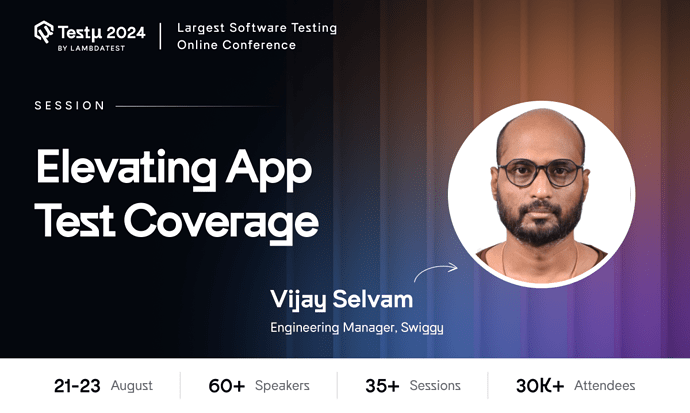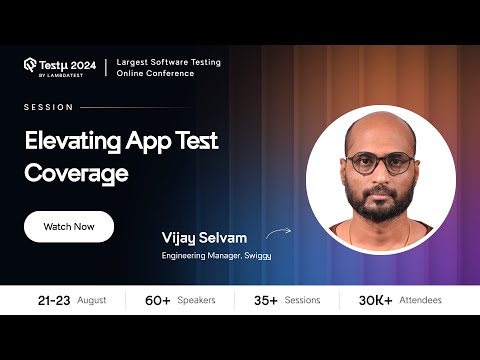Vijay Selvam from Swiggy will discover the essential role of comprehensive non-functional testing in software development. 
This session will cover key strategies for enhancing test coverage, including accessibility, security, and performance testing. Learn how to improve your testing processes, overcome challenges, and deliver more reliable, high-performing applications.
Not registered yet? Don’t miss out—secure your free seat and register now.
Already registered? Share your questions in the thread below 
Hi there,
If you couldn’t catch the session live, don’t worry! You can watch the recording here:
Here are some of the Q&As from this session:
How has our test pyramid evolved that elevates our testing approach? Appium does the iamge comparison and now other tools do the same thing but tackling the growing need of contract testing, integration, image comparison so on makes it challenging ?
Vijay Selvam: The test pyramid has evolved to emphasize a balanced approach with more focus on automated unit and integration tests at the base, and fewer but more strategic end-to-end tests at the top. As tools like Appium have expanded to include image comparison, the challenge has grown to incorporate various types of testing—like contract and integration testing—while maintaining efficiency and coverage.
How to reduce the manual verifications ?
Vijay Selvam To reduce manual verifications, increase automation coverage with robust test scripts, leverage tools for visual and contract testing, and implement continuous testing practices. Use AI and machine learning to enhance test automation and reduce the need for manual checks.
How do you define comprehensive test coverage in the context of modern applications, and what strategies are essential to achieve it?
Vijay Selvam: Comprehensive test coverage involves ensuring all critical application components and scenarios are tested. Strategies to achieve this include creating detailed test plans, prioritizing high-risk areas, implementing a mix of unit, integration, and end-to-end tests, and continuously updating test cases based on evolving application features and user feedback.
Here are some unanswered questions that were asked in the session:
How do you integrate test coverage metrics into your continuous integration and delivery (CI/CD) pipeline?
How can we understand the problem and fix the app lagging and hanging issue?
What are the challenges in achieving comprehensive test coverage for complex applications with dynamic and rapidly changing features, and how can they be addressed?
Having 1000’s of tests documented, would an automation engineer try and address all of them or would you rather do some in each area?
What are the most effective strategies for increasing app test coverage while balancing the trade-offs between thoroughness and testing efficiency?
How to address the app lagging issue no matter how much you have tested it with good bandwidth?
Can failure injection be a helpful strategy to elevate app test coverage, or is it too prone to creating setbacks within the process?
Can automation and AI assistance in mobile testing across different regions remain compliant and within other guardrails without excessive hands-on complexity involved?
How to guarantee the max coverage, knowing that we can’t actually achieve 100% of it, especially when dealing with multiple feature updates?
Traditional testing is effective or not for the better performance of an application?
What parts of the app are not covered by tests yet, and how can we improve coverage?
You can integrate coverage tools like JaCoCo or Codecov directly into your CI/CD pipeline. This way, you get real-time insights into your test coverage as part of your build process. Automated coverage reports help you catch gaps and track improvements with every release.
When your app is slow or crashes, it’s usually because of performance issues. The key is to test your app under different loads using tools like JMeter or New Relic. Look for spikes in CPU, memory, or network use, and then fix the parts causing the slowdown.
Trying to cover every single test in a complex app is a big challenge. The best move is to focus on the most important paths first and automate those. Regularly check your test cases to keep up with new features and use AI tools to help you keep pace with fast changes.
As someone who works with automation, it’s not about running every test all the time. I suggest concentrating on the most important stuff like critical features, performance, and high-risk areas. Running a full test suite every time isn’t practical, so it’s all about finding the right balance.
![]()
![]()

